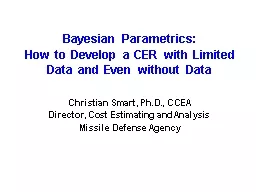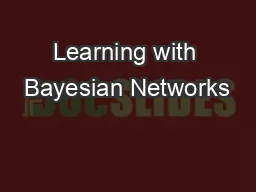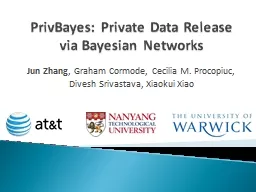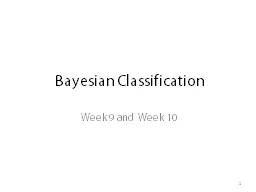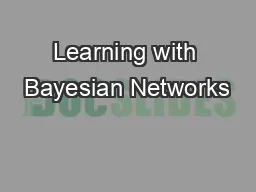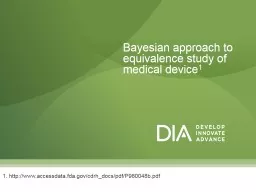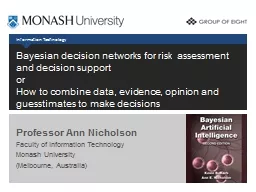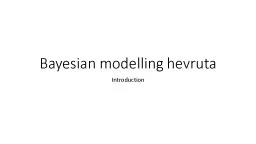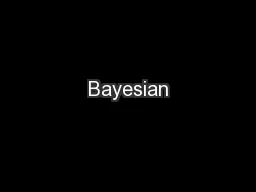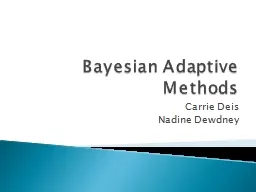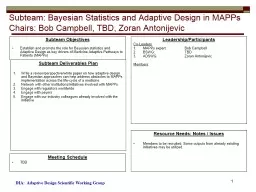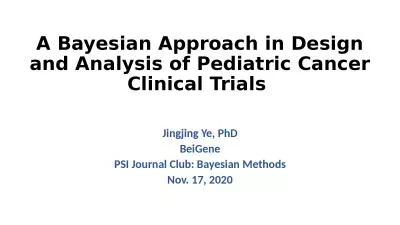PPT-Bayesian Parametrics : How to Develop a CER with Limited Data and Even without Data
Author : fluental | Published Date : 2020-08-29
Christian Smart PhD CCEA Director Cost Estimating and Analysis Missile Defense Agency Introduction When I was in college my mathematics and economics professors
Presentation Embed Code
Download Presentation
Download Presentation The PPT/PDF document "Bayesian Parametrics : How to Develop a..." is the property of its rightful owner. Permission is granted to download and print the materials on this website for personal, non-commercial use only, and to display it on your personal computer provided you do not modify the materials and that you retain all copyright notices contained in the materials. By downloading content from our website, you accept the terms of this agreement.
Bayesian Parametrics : How to Develop a CER with Limited Data and Even without Data: Transcript
Download Rules Of Document
"Bayesian Parametrics : How to Develop a CER with Limited Data and Even without Data"The content belongs to its owner. You may download and print it for personal use, without modification, and keep all copyright notices. By downloading, you agree to these terms.
Related Documents

